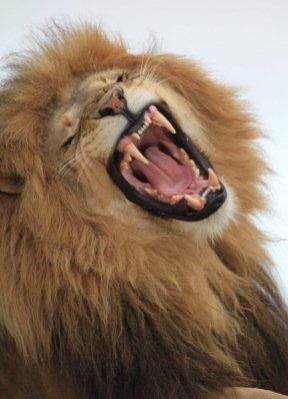The lion - Panthera Leo - Is one of the big cats in the genus Panthera and a member of the family Felidae. With some males exceeding 250 kg (550 lb) in weight, it is the second-largest living cat after the tiger. (It is by far the biggest cat species found in Africa) Lions were once spread as far as from Britain to the Southern parts of Russia. Throughout Eurasia and India all the way down to the Southern tip of Africa. In North-America and the Northern Parts of South-America there was the American Cave Lion up till about 11,000 years ago.
Now you only find them in Sub-Saharan Africa and in Asia with an endangered remnant population in Gir Forest National Park in India. The lion was once the most widespread large land mammal after humans. This status now probably belongs to Cattle.
A lion's roar can travel up to 8 kilometers (about 5 miles) and can reach 114 Decibels at 1meter. At a 116dB the human body starts to perceive vibration from lower frequencies. This powerful roar is not just for marking territory but also serves as a way to communicate with pride members, especially when they are separated. Each Lion's roar has a unique frequency, allowing pride members to recognize each other’s calls even from afar.
Tawny lions have a fascinating feature known as “whisker spots” or “whisker patterns” on their faces. These unique patterns of black spots and lines are not just for show; they serve a practical purpose. Each Lion has a distinct arrangement of these whisker spots, similar to human fingerprints. They help Lions with spatial orientation and navigation in their environment. By touching objects with these whiskers, Lions can detect textures and changes in their surroundings, which is particularly useful for hunting and interacting with other pride members in the dark or dense vegetation.



